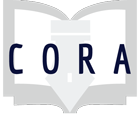Assignment
Annotated Bibliographies: Shining a Light on Source Evaluation with the BEAM Method
Annotated bibliographies have become a popular assignment in college courses and a way to scaffold research papers. Gathering a bibliography before turning in a completed research project allows students to focus on searching strategically and get feedback on the sources they obtained. Annotating that bibliography requires them to think critically about the sources they choose and their relationship to the research at hand. While there are numerous guides and examples that show students the format of an annotation, there are very few that connect annotations to research questions or guide students through making those connections. This lesson plan Uses Joseph Bizup’s BEAM Method from the realm of rhetoric studies to help students think about how sources are used and adds an additional layer of support. This support bridges the gap between a student recognizing a source is generally related to their topic, and thinking critically about how that source is used to answer a research question.
Bizup, Joseph. "BEAM: A rhetorical vocabulary for teaching research-based writing." Rhetoric Review 27, no. 1 (2008): 72-86.
-
-
Describe the purpose and structure of an annotated bibliography
-
Analyze an information source for its ability to help answer a research question and articulate that in an annotation.
-
Information Literacy concepts:
Individual or Group:
Ability Level:
This lesson was developed for a History course, and has also worked well in Ethnic and Area Studies classes.
The class activity works best when using an assigned source (book, article, primary source, etc.) the students have already read/viewed as part of the class. If you don’t have that option, a book review can be a good stand in and even help students consider how to assess sources before reading them. Alternatively, or a short article or primary source can be used.

